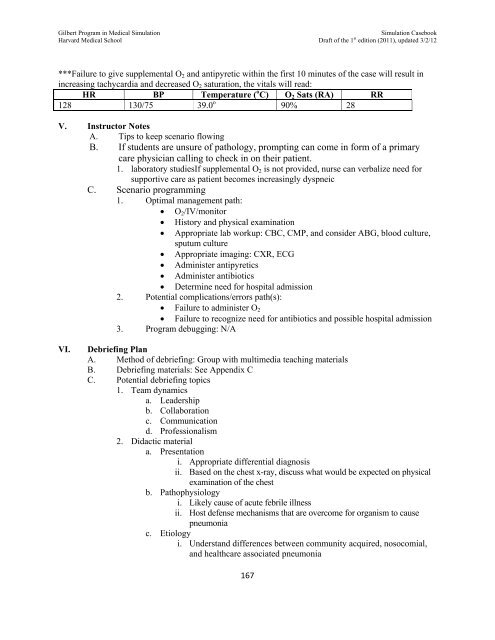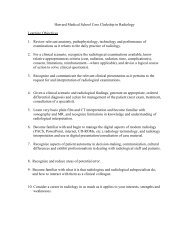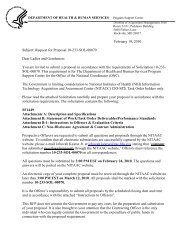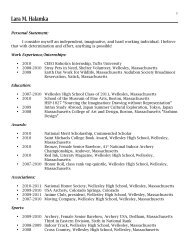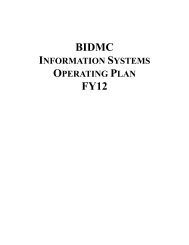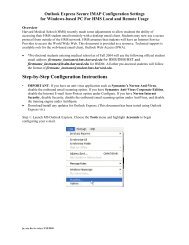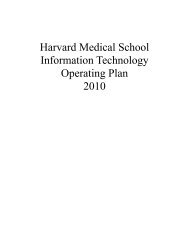SIMULATION CASEBOOK - MyCourses
SIMULATION CASEBOOK - MyCourses
SIMULATION CASEBOOK - MyCourses
Create successful ePaper yourself
Turn your PDF publications into a flip-book with our unique Google optimized e-Paper software.
Gilbert Program in Medical Simulation<br />
Simulation Casebook<br />
Harvard Medical School Draft of the 1 st edition (2011), updated 3/2/12<br />
***Failure to give supplemental O 2 and antipyretic within the first 10 minutes of the case will result in<br />
increasing tachycardia and decreased O 2 saturation, the vitals will read:<br />
HR BP Temperature ( o C) O 2 Sats (RA) RR<br />
128 130/75 39.0 o 90% 28<br />
V. Instructor Notes<br />
A. Tips to keep scenario flowing<br />
B. If students are unsure of pathology, prompting can come in form of a primary<br />
care physician calling to check in on their patient.<br />
1. laboratory studiesIf supplemental O 2 is not provided, nurse can verbalize need for<br />
supportive care as patient becomes increasingly dyspneic<br />
C. Scenario programming<br />
1. Optimal management path:<br />
O 2 /IV/monitor<br />
History and physical examination<br />
Appropriate lab workup: CBC, CMP, and consider ABG, blood culture,<br />
sputum culture<br />
Appropriate imaging: CXR, ECG<br />
Administer antipyretics<br />
Administer antibiotics<br />
Determine need for hospital admission<br />
2. Potential complications/errors path(s):<br />
Failure to administer O 2<br />
Failure to recognize need for antibiotics and possible hospital admission<br />
3. Program debugging: N/A<br />
VI.<br />
Debriefing Plan<br />
A. Method of debriefing: Group with multimedia teaching materials<br />
B. Debriefing materials: See Appendix C<br />
C. Potential debriefing topics<br />
1. Team dynamics<br />
a. Leadership<br />
b. Collaboration<br />
c. Communication<br />
d. Professionalism<br />
2. Didactic material<br />
a. Presentation<br />
i. Appropriate differential diagnosis<br />
ii. Based on the chest x-ray, discuss what would be expected on physical<br />
examination of the chest<br />
b. Pathophysiology<br />
i. Likely cause of acute febrile illness<br />
ii. Host defense mechanisms that are overcome for organism to cause<br />
pneumonia<br />
c. Etiology<br />
i. Understand differences between community acquired, nosocomial,<br />
and healthcare associated pneumonia<br />
167


